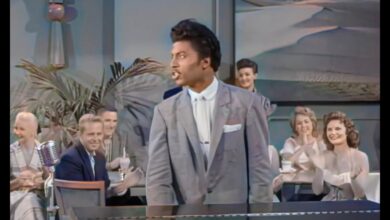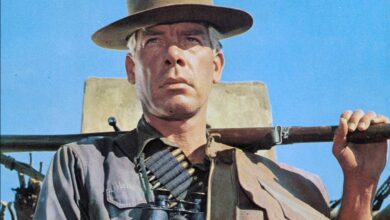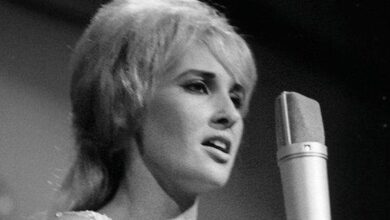The Statler Brothers’ “More Than A Name On A Wall” Echoes Across America’s Heartstrings in 1989
When The Statler Brothers released “More Than A Name On A Wall” in 1989, it wasn’t just another entry in their celebrated discography—it was a haunting tribute that tapped into the national consciousness. Emerging during a period when America was still grappling with the aftershocks of the Vietnam War and other global conflicts, the song struck an emotional chord with audiences across generational divides. Chart-wise, the song climbed to No. 6 on the Billboard Hot Country Singles & Tracks, but its impact extended far beyond numbers. It became an anthem of remembrance, giving a voice to grief, patriotism, and the personal cost of war.
The Statler Brothers—originally formed in Staunton, Virginia—had long been revered for their distinct blend of gospel roots, rich harmonies, and storytelling prowess. Comprising Don Reid, Harold Reid, Phil Balsley, and Jimmy Fortune (who had replaced Lew DeWitt due to health issues in the early ’80s), the group was a mainstay in country music, bringing a uniquely American perspective to their songs. Known for both sentimental ballads and light-hearted narratives, their versatility allowed them to reach a broad audience. “More Than A Name On A Wall” leaned deeply into the solemn side of their artistry, showcasing their unmatched ability to deliver emotion with restraint and reverence.
The song was co-written by Jimmy Fortune and John Rimel, both of whom approached the composition with personal conviction. Fortune, a Vietnam-era veteran himself, had always felt a deep connection to the soldiers whose names adorned the black granite of the Vietnam Veterans Memorial. According to interviews, the inspiration came from a visit to the wall, where he observed a grieving mother praying aloud to the name of her son. That raw, deeply human moment gave birth to the lyrics that would soon be immortalized in one of the Statler Brothers’ most poignant tracks.
Recorded with producer Jerry Kennedy—who had long been a part of the group’s sonic identity—the song featured minimalistic instrumentation that allowed the vocals to breathe and the message to take center stage. A gentle acoustic guitar carried the melody, while understated piano chords and soft steel guitar runs provided a somber backdrop. But it was the vocal delivery—anchored by Fortune’s tender lead and supported by the brothers’ signature harmonies—that delivered the emotional payload. The simplicity of the arrangement served to amplify the emotional weight of every line.
Upon its release, “More Than A Name On A Wall” received widespread acclaim from critics and fans alike. Radio stations reported high request numbers, and the song resonated particularly strongly during Memorial Day and Veterans Day commemorations. It remained on the country charts for several weeks and became a staple in the Statler Brothers’ live performances. Though it didn’t win any major awards, its legacy as a fan favorite and cultural artifact was cemented almost immediately.
The song’s cultural impact was undeniable. It brought renewed attention to the Vietnam Veterans Memorial, prompting many listeners to visit the wall for the first time or to revisit it with a deeper sense of reverence. In many ways, the song bridged the gap between generations—giving children of the ’80s a tangible connection to the wartime losses their parents had endured. It also opened the door for other country artists to explore themes of war, loss, and national pride with emotional sincerity, paving the way for a genre-wide embrace of tribute songs.
For The Statler Brothers, this single reaffirmed their place not just as entertainers but as narrators of the American experience. While they had long been beloved for humorous tunes like “Flowers on the Wall,” this song reminded fans of the group’s deeper capacity for compassion and social commentary. It expanded their fan base, earning respect from veterans’ organizations and patriotic communities nationwide, and gave Jimmy Fortune a stronger voice as a songwriter in the group.
Other artists took note. The song inspired similar tributes across genres, from Toby Keith to George Jones. It also found life in churches, memorial services, and Veterans Day concerts across the country. The emotional clarity and sincerity with which it was delivered made it a model for storytelling in music, especially when dealing with sensitive subjects. Cover versions, though never achieving the same visibility, began surfacing at local events and televised memorials throughout the 1990s.
Among the most notable renditions was a live performance at a national memorial ceremony where Jimmy Fortune, performing solo after the group’s retirement, sang the song with an acoustic guitar. The moment was captured and circulated widely, bringing the song to younger audiences who may not have grown up with the Statlers. Fortune’s continued solo performances of the piece have helped preserve its emotional integrity through the decades.
The release of “More Than A Name On A Wall” came at a meaningful time for the group. Having recently marked over two decades in the business, they were at the peak of their maturity as vocalists and interpreters. The song not only showcased their growth but also reminded fans of their unwavering commitment to faith, family, and country. It became a defining track in their catalog—one that encapsulated their ability to speak directly to the American soul.
Over the years, the song has maintained a strong presence in the world of country music. It’s frequently played at memorial events, featured in documentaries about veterans, and included in “best of” compilations dedicated to patriotic country music. Its lyrics have even been quoted in political speeches and inscribed on tribute plaques. Unlike many songs that fade after their chart run, this one has endured, continually finding relevance as new conflicts and losses arise.
Musically, “More Than A Name On A Wall” influenced a broader trend toward emotionally honest country ballads. It reminded producers and songwriters that simplicity can carry profound weight, and it reinvigorated the use of vocal harmony as an emotional tool. The song’s structure—unadorned yet powerful—set a precedent that many country artists would follow into the 1990s and beyond.
Though The Statler Brothers officially retired in 2002, the song remains a living testament to their artistry. Jimmy Fortune has continued to perform it in his solo career, often to audiences that know every word. Its endurance is a reflection of not just its musical merit but the deep emotional truth it holds. Few country songs have managed to capture a national mood with such grace.
“More Than A Name On A Wall” stands as a reminder of the human cost behind every war and the importance of remembrance. Its emotional gravity, lyrical clarity, and heartfelt delivery have made it more than just a song—it is a national elegy. In giving voice to the quiet grief of countless families, The Statler Brothers didn’t just record a hit. They recorded history.



